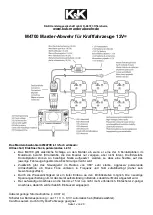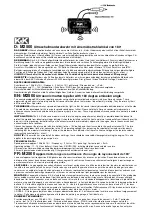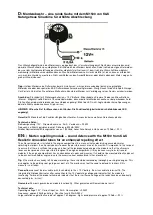
1
2
3
4
5
6
7
8
Service and Maintenance
189
Inspection and Rotation of Tire
We recommend that you should check the
tires (including spare tire) of the vehicle for
signs of wear or damage regularly. Refer to
"When to Use New Tire" in Section 7 "Ser-
vice and Maintenance" for details. Tire rota-
tion should be carried out every 10000 km.
The purpose of carrying out tire rotation
regularly is to equalize wear of all tires on
the vehicle. This ensures that the vehicle
can always exhibit a performance as close
as possible to the performance when the
tires are new. Once abnormal wear is
found, rotate the tires as soon as possible
and check the wheel alignment. In addition,
check if the tires or wheels are damaged.
Refer to "When to Use New Tire" and
"Replacement of Wheel" in Section 7 "Ser-
vice and Maintenance".
During tire rotation, be sure to rotate the
tires as the correct rotating pattern shown in
the illustration. Do not use compact spare
tires when rotating the tires. After rotating
the tires, adjust the inflation pressure of the
front and rear tires as indicated by the tire
pressure label on the vehicle. Refer to "Tire
Pressure" in Section 7 "Service and Mainte-
nance".
The rust or dirt on the wheels or on
the connecting parts of the wheels
may cause the wheel nuts to get loose after
they are used for a period of time. The
wheels may fall off and lead to accidents.
Remove any rust or dirt from the connection
between the wheels and the vehicle when
replacing the wheels. In case of an emer-
gency, you can clean it with cloth the paper;
but, if necessary, please get rid of all rusts
or dirts with a scraper or steel wire brush
later.
When to Use New Tire
Various factors such as maintenance, tem-
perature, driving speed, vehicle load and
road conditions may affect the time that you
need to replace a new tire.
Checking the tread wear indicator is a way
to judge when to use a new tire. The indica-
tor will be visible when the tread of the
wheel is worn down to 1.6 mm or less.
A new tire should be used if any of the fol-
lowing occurs:
•
The tread wear indicator appears in at
least 3 places on the tire.
•
The cord or cord fabric can be seen
through the tire rubber.
•
The treads or sidewalls have splits, cuts
and cracks deep enough to expose the
cord or cord fabric.
•
The tires have bulges, bumps or sepa-
rations. The tires with punctures, cuts or
other damages that cannot be com-
pletely repaired due to the damaged
area or portion.
The rubbers in the tires will degrade over
time, even if these tires are never used. The
same is true for the spare tires. There are
many factors affecting the aging speed,
including temperature, load and inflation
pressure. Usually, if the tires can receive
proper service and maintenance, they may
have already been worn too badly for use
before quality degradation due to aging.
When the tires become old, consult your tire
manufacturer for further details if you can-
not determine when the tires should be
replaced.
Please dispose of the used tires
according to relative environment
protection laws.
















































